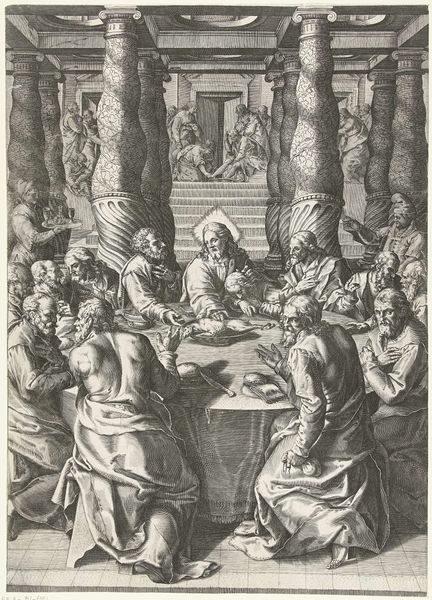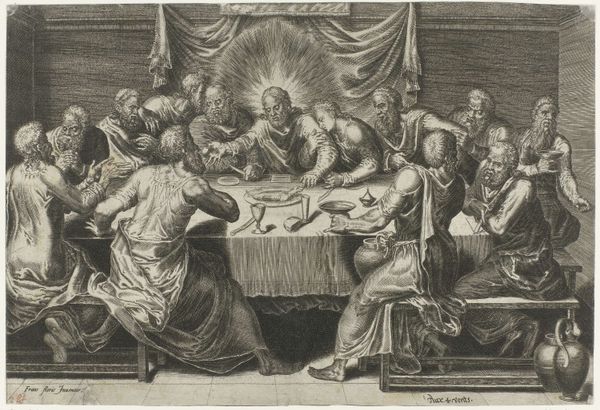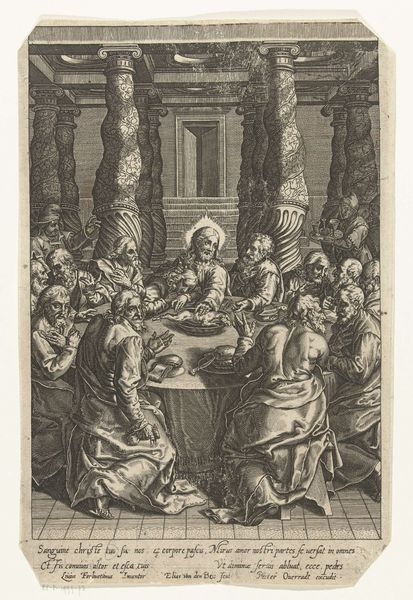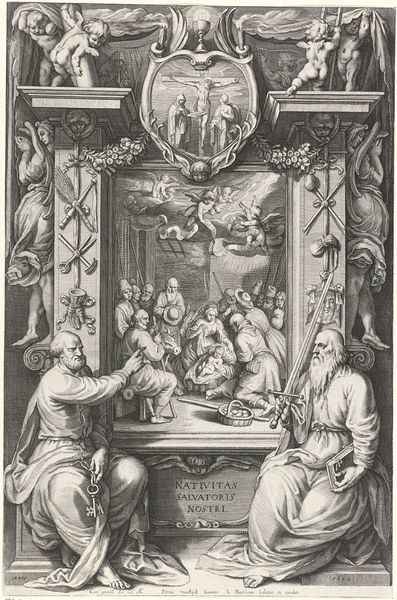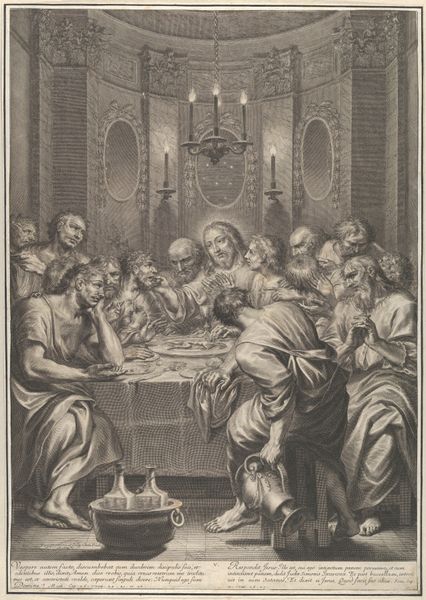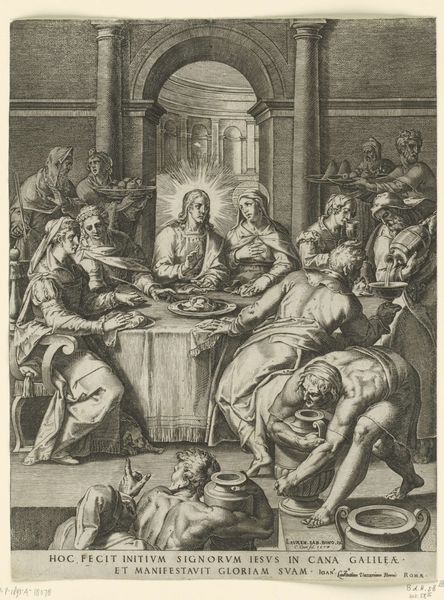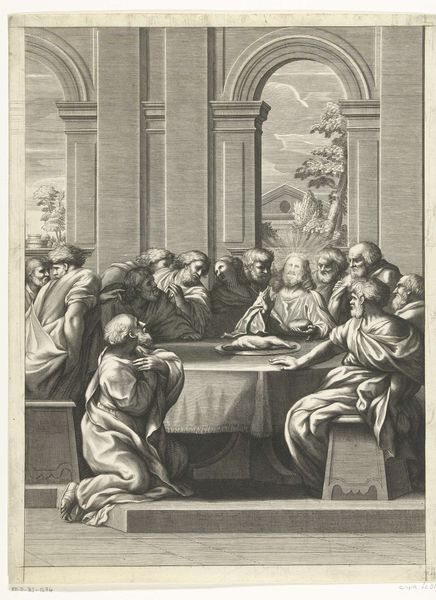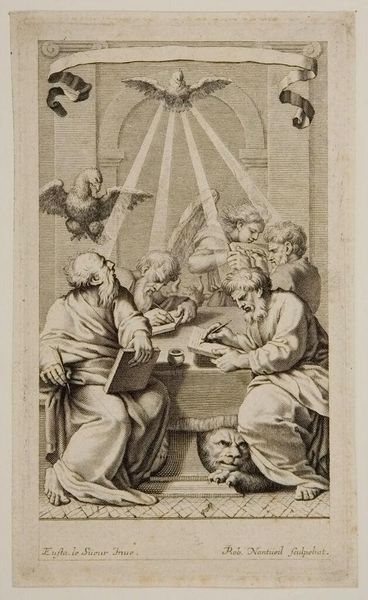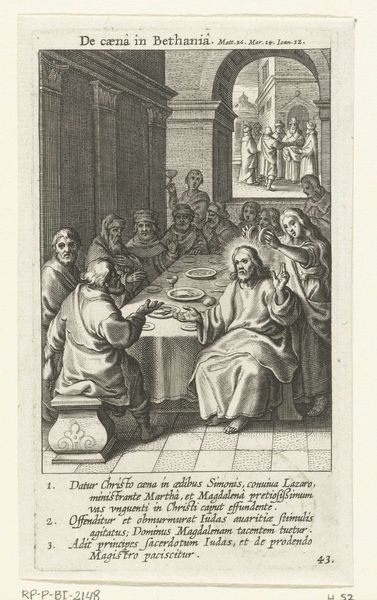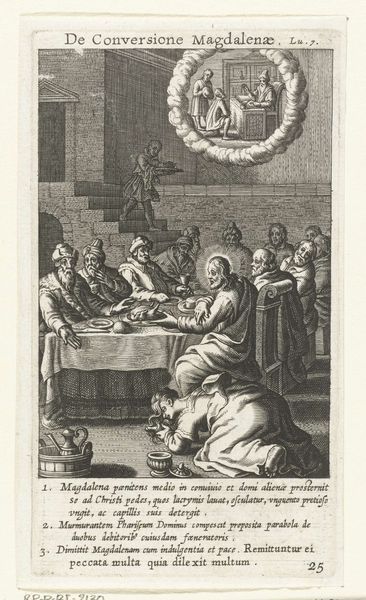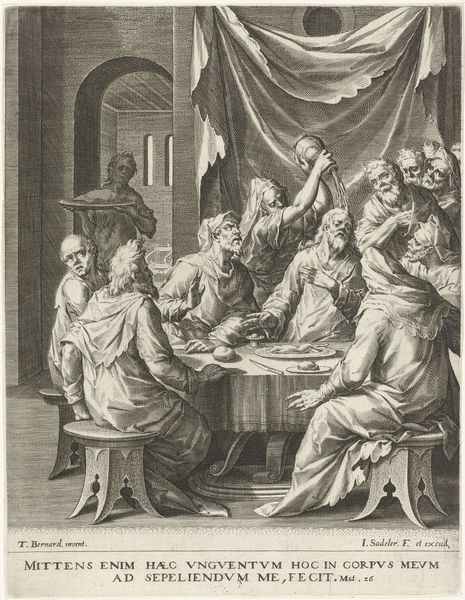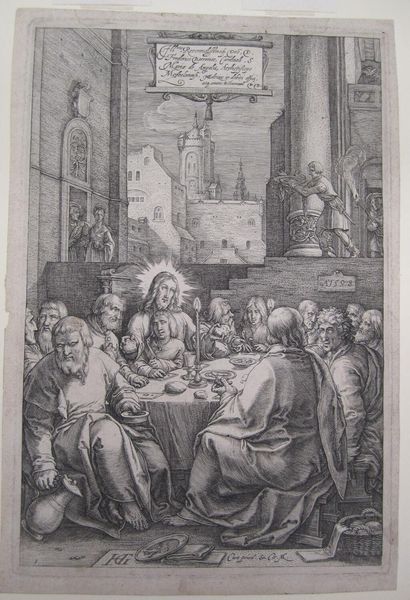
Copyright: CC0 1.0
Editor: Here we have Cornelis Cort's "The Last Supper," a print held at the Harvard Art Museums. The architectural setting feels grand, almost theatrical. What's your read on its historical context and public reception? Curator: This print reflects the Counter-Reformation's emphasis on the Eucharist and the Church's authority. How would viewers at the time have interpreted the detailed setting and the expressive gestures of the apostles? The architecture is designed to impress. Editor: It definitely feels like a statement of power. I see the scene of Jesus washing the feet of the apostles at the top of the stairs. Curator: Exactly. The artist connects the Eucharist with service. Cort's work shows how religious imagery was deployed to reinforce specific doctrines and social hierarchies, particularly through the public display of such prints. Editor: I hadn't considered the political implications of religious art so directly. It's more than just a depiction, it's a statement. Curator: Precisely! These prints served as visual arguments in a time of intense religious and political upheaval.
Comments
No comments
Be the first to comment and join the conversation on the ultimate creative platform.
